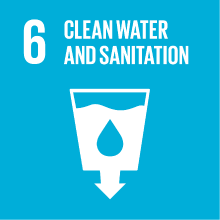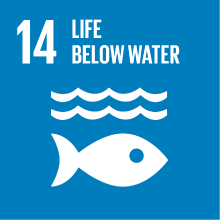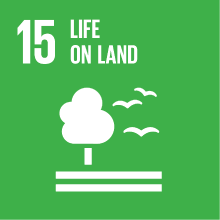EARTH SCIENCES: PRINCIPLES AND LABORATORY - 1 - THEORY
- Academic year
- 2023/2024 Syllabus of previous years
- Official course title
- FONDAMENTI DI SCIENZE DELLA TERRA E LABORATORIO - 1 - ATTIVITA' TEORICA
- Course code
- CT0592 (AF:451646 AR:245354)
- Teaching language
- Italian
- Modality
- On campus classes
- ECTS credits
- 0 out of 12 of EARTH SCIENCES: PRINCIPLES AND LABORATORY
- Degree level
- Bachelor's Degree Programme
- Academic Discipline
- GEO/08
- Period
- 2nd Semester
- Course year
- 1
- Where
- VENEZIA
- Moodle
- Go to Moodle page
Contribution of the course to the overall degree programme goals
The teaching on Earth Sciences (Modules 1-4) aims to provide the student with the basis for understanding the geological-physical characteristics of the environment, mineralogy, petrography and geochemistry, and distribution of the various types of rocky outcrops. Some basic concepts of sedimentology, stratigraphy, geomorphology, and structural geology are also discussed. The Earth will be studied as an undisturbed (natural) system; this is the basis for understanding changes and impacts triggered by anthropic activities. In particular, this teaching aims to (i) describing the structure of the Earth, (ii) analyzing the geological processes, (iii) describing the types and properties of the main minerals of the rocks; (iv) identifying a rock and understanding its properties; (v) studying the processes which lead to the degradation and erosion of rocks; (vi) “reading” the lithostratigraphic units to trace the geological processes; (vii) understanding plate tectonics and being able to read the deformations of the continental crust; (viii) knowing and correctly interpreting a topographic map and being able to read a geological map.
Module 1 focuses on the study of the materials forming the Earth's crust, analyzing their properties, their physical and chemical characteristics and their interaction with the atmosphere, the hydrosphere and the biosphere. In particular, Module 1 deals with the study and classification of minerals, the various types of rocks present in the Earth's crust (magmatic, sedimentary, metamorphic) and the lithogenetic cycle.
The final aim of the whole course of “Earth Sciences - Principles and Laboratory”, comprehensive of the four modules, is to provide an overview of the Earth Sciences basic principles and, on a broader perspective, increase knowledge of the physical world. In this way, the graduate student in Environmental Sciences will acquire the competences needed to communicate with the Earth Science specialists during his/her future professional career.
Expected learning outcomes
1. Knowledge and understanding
1a. Knowing the basic concepts and appropriate terminology used in Earth Sciences;
1b. Understanding the chemical-physical processes that generated the various types of rocks;
1c. Understanding the geological, geographical and climatic factors of physical degradation, chemical alteration and erosion of rocks;
1d. Use the knowledge acquired in the frontal lessons in the analysis of natural resources and the vulnerability of the territory using specific and interdisciplinary laboratories to be carried out in the field;
1e. Understand the environmental dynamics, the processes inside the Earth and their external effects.
2. Ability to apply knowledge and understanding
2a. Knowing how to correctly use terminology and geological principles in all the processes of application and communication of Environmental Sciences;
2b. Knowing how to identify the geological processes that shaped the planet and understand its mechanisms and products;
2c. Knowing how to identify and describe the most common types of rock, their mineralogical composition, their properties and the formation environments;
2d. Knowing how to describe the physical and chemical degradation processes of rocks;
3. Ability to judge
3a. Knowing how to formulate and argue hypotheses on the basis of the concepts learned during teaching;
3b. Knowing how to apply knowledge and tools of Earth Sciences to explain the shape, composition and properties of the Earth system;
3c. Knowing how to apply a critical and multidisciplinary approach;
4. Communication skills
4a. Knowing how to communicate the concepts learned in the geological field, using appropriate terminology;
4b. Knowing how to interact with different professional figures that a graduate in Environmental Sciences will find along his/her professional career, such as biologists, chemists, geologists, doctors, epidemiologists, as well as with figures of non-scientific fields (politicians, economists, etc.);
4c. Knowing how to simplify and summarize the concepts of Earth Sciences to the general public, using simple and direct terminology;
5. Learning skills
5a. Knowing how to apply the concepts learned in the classroom to real case studies;
5b. Knowing how to read the geological and environmental processes that have shaped a territory;
5c. Knowing how to critically consult the reference texts and know how to interpret the bibliography that will be proposed during the didactic path.
Pre-requirements
Contents
Part 1 (introduction) deals with the structure of the Earth (and its subdivisions) and briefly describes the theory of plate tectonics to define the different geodynamic environments.
Part 2 (elements of mineralogy) describes minerals and their properties. The amorphous state and the crystalline state, the crystallization process are studied and the elements of symmetry, the law of symmetry and crystalline systematic are introduced. The atomic structure of the minerals is presented, isotropy and anisotropy are explained, the various classes of minerals are described (silicates, carbonates, oxides, sulphides, sulphates). The main structures and groups of silicates are defined (neso-, soro-, ino-, phyllo-, and tecto-silicates). The physical properties of minerals, specific gravity, melting point, hardness, cleavage, toughness, gloss, transparency, color, refractive index, piezoelectricity and magnetic properties are examined. Polymorphism, isomorphism and vicariance are described.
Part 3 (elements of petrography) describes the rocks present in the Earth's crust (magmatic, sedimentary and metamorphic rocks). It explains the chemical composition, minerals and classification of intrusive and effusive magmatic rocks. Classification diagrams of magmatic rocks are presented. The crystallization of the magma is described and the Bowen reaction series is analyzed. The sedimentary process is introduced: meteoric degradation, the main types of chemical alteration of the rocks, transport of unconsolidated material, sedimentation and diagenesis. Minerals of sedimentary rocks are introduced, with an in-depth analysis on clay minerals. The main types of sedimentary rocks and their chemistry are described. The metamorphic process (regional, contact metamorphism) and the main types of metamorphic rocks are described.
Part 4 (geodynamic environments) briefly describes the lithogenetic cycle during exogenous and endogenous processes in the different geodynamic environments. The geological forms of volcanic bodies and plutonic intrusive bodies are analyzed.
Referral texts
Grotzinger, J.P., Jordan, T.H. Capire la Terra. Terza edizione italiana condotta sulla settima edizione americana, Zanichelli, 2016. ISBN: 978-8808821232 [https://www.zanichelli.it/ricerca/prodotti/capire-la-terra-grotzinger-jordan ]
Some optional books and supplementary readings are available at the University library system (Scientific campus, alpha building) or upon request to the teacher:
Klein, C., Philpotts, A.R. Mineralogia e petrografia. Prima edizione italiana condotta sulla seconda edizione inglese, Zanichelli, 2018. ISBN: 978-8808320605
[https://www.zanichelli.it/ricerca/prodotti/mineralogia-e-petrografia ]
Assessment methods
Exam. The exam of Module 1 will be hold together with Module 2 and consists of an oral test divided into two parts. In the first part, students have to recognize and describe a rock provided on the day of the exam. All the rocks belong to the collection of the geo-mineralogy lab and can be consulted by students during Module 2 and, on request, during the preparation of the exams at any time of the year (please contact the teachers in advance). The second part deals with the concepts presented during the lectures. A maximum of 10 points will be assigned to the first activity (rock recognition), a maximum of 20 points will be assigned to the second part (theory).
Evaluation/Grading. Overall, examinations of Modules 1+2 and 3+4 will concur to the final mark of the entire course of “Earth Sciences: Principles and Laboratory”. The marks assigned to the tests of Module 1 + 2 and Module 3 + 4 will be considered valid for a maximum period of 12 months.
Type of exam
Teaching methods
All lessons and supplementary materials are available as presentations in PDF format and are distributed to students on a weekly basis using the Moodle teaching platform. Students are invited to periodically keep an eye on Moodle for updates.
The teaching course includes two didactic field trips in Modules 2 and 4. The first excursion is on the Colli Euganei, the second on the Dolomites (Passo Valles). The excursions aim to consolidate the geological knowledge acquired during lectures and workshops.
2030 Agenda for Sustainable Development Goals
This subject deals with topics related to the macro-area "Natural capital and environmental quality" and contributes to the achievement of one or more goals of U. N. Agenda for Sustainable Development



